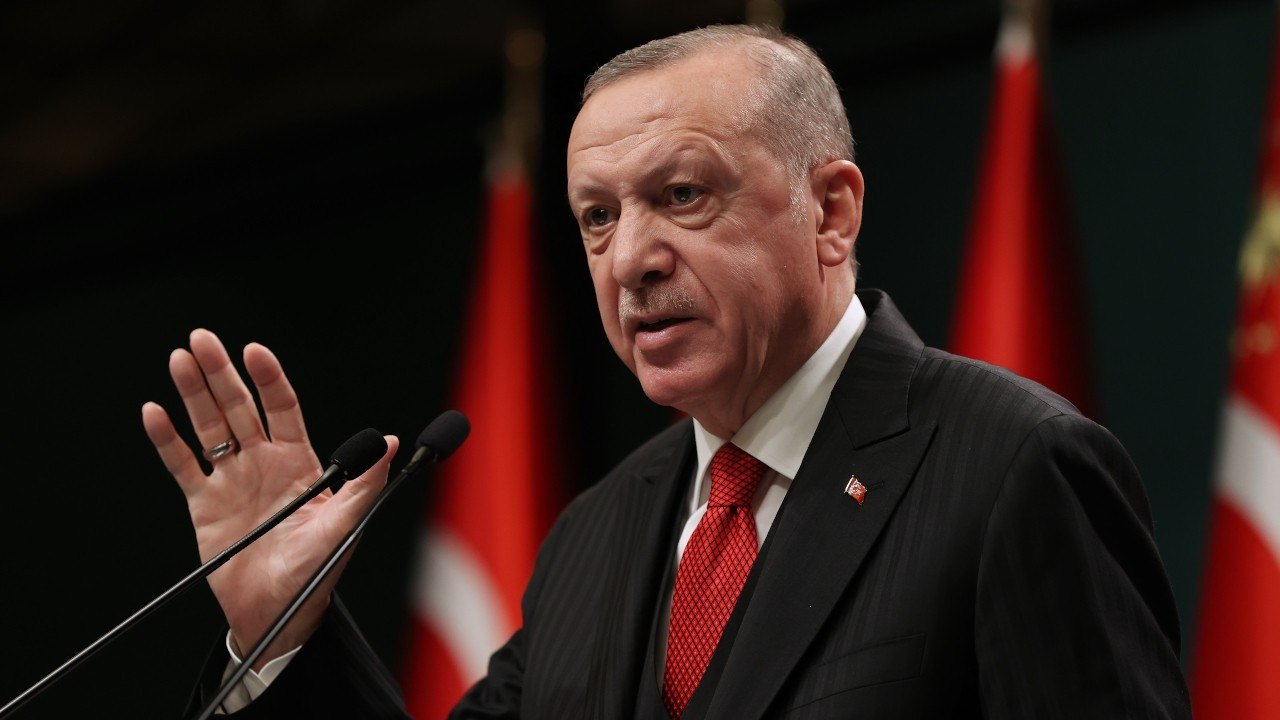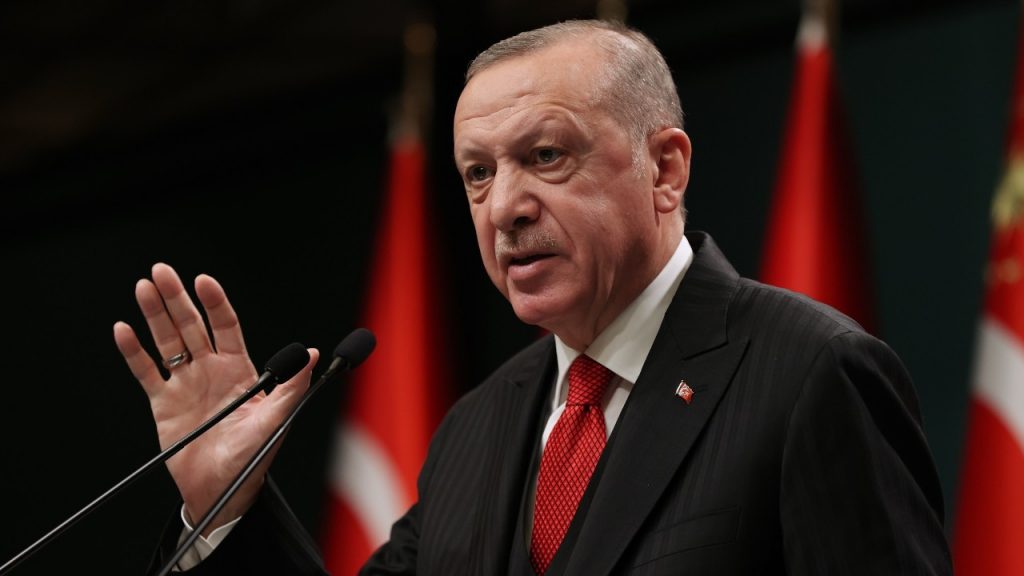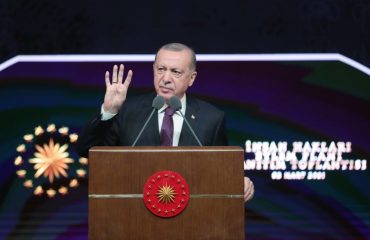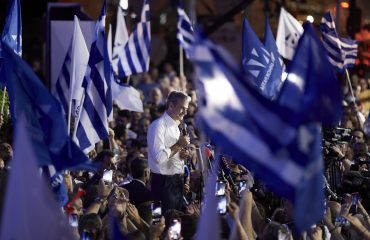

After the May presidential election victory, we must identify “Erdoğanism” as a unique phenomena which should be considered separately from his ruling Justice and Development Party (AKP). Here is a summary of “Erdoğanism.”
President Tayyip Erdoğan’s re-election, in perhaps the most disadvantageous period of his rule since 2002, reveals the need to name “Erdoğanism” in Turkish politics, which has become a separate phenomena from the Justice and Development Party (AKP) he founded.
Erdoğanism in numbers and beyond
Erdoğan received 49.5 percent of the vote and the AKP 35.6 percent in the first round of elections on May 14. In the June 24, 2018 elections, he was elected president with 52.5 percent of the vote, while the AKP received 42.5 percent. The widening gap in support between Erdoğan and his party was evident on May 14, but we need to analyze the results of the second round on May 28 to see the issue more clearly in terms of Erdoğanism rather than the gap between Erdoğan and his party.
Erdoğan, backed by the People’s Alliance, received 52.2 percent of the votes on May 28, while his rival, the Republican People’s Party (CHP) leader Kemal Kılıçdaroğlu, backed by the National Alliance, received 47.2 percent.
In the first rounds of both the 2018 and 2023 elections, Erdoğan’s votes included the support of the Nationalist Movement Party (MHP). This support was enough to overcome the 50+1 percent threshold in 2018, but not on May 14, 2023. In this case, the decline in the AKP’s votes – even though it is still the first party – is because the MHP, which received 11.1 percent of the vote in 2018, received 10.1 percent.
Personal gravity
On the other hand, the Islamist New Welfare Party (Yeniden Refah), which should be considered one of the surprises of the 2023 elections with 2.8 percent, the extreme right Greater Unity Party (BBP) with 1 percent, the Kurdish-Islamist Hüda-Par, and the Democratic Left Party (DSP), both entered the elections from the AKP lists, also had a share in Erdoğan’s 49.5 percent on May 14.
So, what happened that the 49.5 percent support on May 14 increased by nearly 3 percent in fifteen days?
It would be inadequate and unfair to explain this only by the fact that not all voters of all parties did not vote for Kılıçdaroğlu as a result of the disarray of the National Alliance and the opposition in general, and only Sinan Oğan, one of his rivals on May 14, supported Erdoğan for the run-off. As a result, Kılıçdaroğlu’s vote share, which was 44.9 percent on May 14, increased by nearly 3 percent on May 28, but it was not enough.
It would be difficult to explain the difference without considering Erdoğan’s political gravitational pull. Even though Türkiye is going through one of the most serious economic crises in the history of the Republic, has suffered the worst earthquake disaster in its history and the incompetence of state institutions was exposed at the first moment, Erdoğan was able to gather undecided and scattered votes thanks to this gravitational pull, which can be considered the basis of the phenomenon of Erdoğanism.
Ideology, use of force, persistence, and pragmatism
Erdoğanism will certainly be examined in more detail by political scientists in the future. However, in general terms, we can list the following features of Erdoğanism:
1-Ideological ground: There is a strong ideological ground such as political Islamism at Erdoğan’s starting point in politics. With the capabilities brought by this ideology, he has been making use of a common language with its voters, even among religious segments who do not have voters. With a current example, when he says “Nass” while defending the low-interest policy, those who are not accustomed to the language of the Qur’an are trying to decipher the meaning of it, and he has already conveyed the message “You got it” to the mosque community. Using the advantage of his religious education, he addresses with short sentences, frequent repetitions, and sometimes with epic poems. When he says “we”, his supporters understand that he is talking about the ummah, not the Turkish nation only, and that he is actually using a concept that crosses national borders.
Yesterday is yesterday, today is today
2- Pragmatist insistence: Erdoğanism means insisting and repeating in a place, just like in Erdoğan’s oratory style, until it is obvious that his decisions will not yield results despite the warnings that he is wrong. On the other hand, it also includes pragmatism on the level of opportunism, which can make sharp maneuvers when it comes to the point of no return. For example, the politics of Syria between 2011-2016. For example, turning from dialogue with the PKK to accusing opponents of supporting the PKK. For example; The fact that the Central Bank had to raise interest rates after 27 months, even though he still says “I haven’t changed”. In this respect, he uses former Turkish President Süleyman Demirel’s “Yesterday was yesterday, today is today” tactics.
3- Fear-hope balance: Erdoğan is the politician who uses the voter-fear-hope balance as a power multiplier best in Türkiye so far. He can use the intimidation of “If I go, you will lose”, in the same frame with the hope of “If there is a mistake, I will fix it again”. Erdoğanism includes that as well. The object of the fear factor is sometimes terrorism, sometimes the return of headscarf discrimination. The hope factor showed itself most clearly when the victims of the earthquake voted for Erdoğan again.
Taking the risk, grabbing the opportunity
4- Use of force: Erdoğanism, in a way, means not hesitating to use the available opportunities with maximum efficiency, by taking the risk of violating the constitutional-legal boundaries when necessary.
Power usage has two dimensions. One to win elections and the other to maintain power.
It is a clear example of this that he made almost all the ministers as parliamentary candidates in the last elections and mobilized their institutional resources not only for his re-election but for the AKP election campaign. That applies to the claims of ballot box irregularities as well. Until the objections are made, the election process ends and Erdoğan as the early bird, gets the worm.
When Erdoğan is in power, he uses all the state apparatus he can, be it judicial, security, or financial to put pressure on, intimidate and deter his opponents. Keeping Osman Kavala and Selahattin Demirtaş in prison on new charges despite following the release orders by courts is exemplary of the use of force, being merciless from time to time in the context of Erdoğanism.
Boosting the “can-do-spirit”
5- Heavy populism: In a way, Erdoğanism means a high dose of populism, mainly by boosting the “We can do it too” feeling rather than “The guys (meaning Westerners) are doing it well”. While secular, republican and democrat groups ignored and disdained projects such as the National Combat Aircraft, Bayraktar TB-2, the Anadolu UAV gunship, or the mega infrastructure projects like Eurasia tunnel connecting the two continents from under the Bosporus, the Istanbul Airport or Çanakkale Bridge over the strait of Dardanelles, they failed to see that most of the people were proud of these projects. Moreover, the arrogant criticism tone used overshadowed the justified criticisms about the implementation and financial irregularities regarding these projects.
6- National pride: “Precious Loneliness” was a formula that enabled the populist justification to the foreign policy contradictions in the period starting with the Arab Spring (2010) until the 2016 coup attempt. The use of “national pride” as a power multiplier in foreign policy is one of the foundations of Erdoğanism. An example of this is that the slogan “The world is bigger than five”, which is theoretically right but practically near impossible, finds a certain echo in the world with its constant repetition. The political persistence that gained a military dimension in Libya, as well as the support given by Azerbaijan to the liberation of its lands from the Armenian occupation brought results. But Erdoğan had his pragmatist turn and has been playing a conciliatory role in the Russian war on Ukraine rather than an interventionist one.
Turk-Islam synthesis coming true
7- Turk-Islam synthesis: The Turkish people were widely acquainted with the concept of Turk-Islam synthesis (originally, a US-inspired project during the Cold War during former Prime Minister and President Turgut Özal’s time from the mid-1980s to early 1990s). But it was Erdoğan, along with MHP leader Devlet Bahçeli, who accomplished this. In other words, Erdoğanism uses the synthesis of the Islamic ummah concept and Turkish nationalism as an important power multiplier both in domestic and foreign policy. The Organization of Turkic States is an example; even Hungary, a member of the European Union, is an observing member, like the Turkish Republic of Northern Cyprus. This synthesis was possible with certain concessions for both Erdoğan and Bahçeli. For example, Bahçeli defends, secularism in the Constitution and reforms and principles of Mustafa Kemal Atatürk, the founder of the Turkish Republic, even though he remains in discourse most of the time. In return he took part in the same alliance with Hüda-Par, being both a Kurdish nationalist and orthodox Islamist.
As we enter the second century of the Republic in 2023 with Erdoğan, who is in his 21st year in power and has received a visa for five more years, it seems necessary to define and work on the definition of Erdoğanism in order to better read the political landscape.


